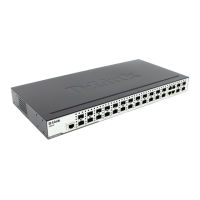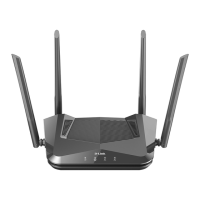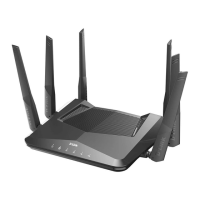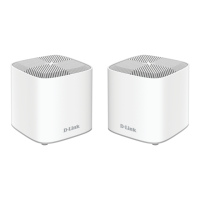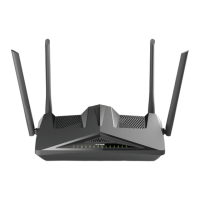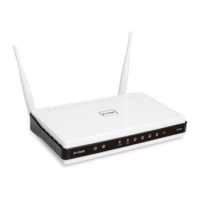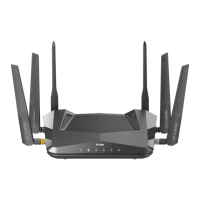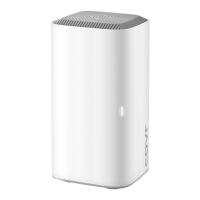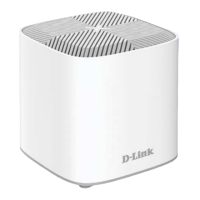xStack® DES-3200 Series Layer 2 Managed Fast Ethernet Switch
144
Source IP Address
Select and enter the source IP address mask.
Destination IP
Enter the destination IP address.
Destination IP
Select and enter the destination IP address mask.
Protocol
Selecting this option instructs the Switch to examine the protocol type value in each
frame's header. Then the user must specify what protocol(s) to include according to the
following guidelines:
Select this option to specify that the rule will be applied to ICMP traffic.
Type – Enter the ICMP packet type value.
Code – Enter the ICMP code value.
Select IGMP to instruct the Switch to examine the Internet Group Management Protocol
(IGMP) field in each frame's header.
Type – Enter the IGMP packet type value.
Select TCP to use the TCP port number contained in an incoming packet as the
forwarding criterion. Selecting TCP requires that you specify a source port mask and/or
a destination port mask.
TCP Source Port - Specify a TCP port number for the source port form (0-65535).
TCP Source Port Mask - Specify a TCP port mask for the source port in hex form (hex
0x0-0xffff), which you wish to filter.
TCP Destination Port - Specify a TCP port number for the destination port form (0-
65535).
TCP Destination Port Mask - Specify a TCP port mask for the destination port in hex
form (hex 0x0-0xffff) which you wish to filter.
Flag Bits - The user may also identify which flag bits to filter. Flag bits are parts of a
packet that determine what to do with the packet. The user may filter packets by filter-
ing certain flag bits within the packets, by checking the boxes corresponding to the flag
bits of the TCP field. The user may choose between urg (urgent), ack
(acknowledgement), psh (push), rst (reset), syn (synchronize), fin (finish).
Select UDP to use the UDP port number contained in an incoming packet as the
forwarding criterion. Selecting UDP requires that you specify a source port mask and/or
a destination port mask.
UDP Source Port - Specify a UDP port number for the source port form (0-65535).
UDP Source Port Mask - Specify a UDP port mask for the source port in hex form (hex
0x0-0xffff).
UDP Destination Port - Specify a UDP port number for the destination port form (0-
65535).
UDP Destination Port Mask - Specify a UDP port mask for the destination port in hex
form (hex 0x0-0xffff).
Select Protocol ID - Enter a value defining the protocol ID in the packet header to mask.
Protocol ID - Specify that the rule applies to the IP protocol ID traffic from (0-255).
User - Specify the Layer 4 part value.
User Mask - Specify the Layer 4 part mask
Action Select Permit to specify that the packets that match the access profile are forwarded by
the Switch, according to any additional rule added (see below).
Select Deny to specify that the packets that match the access profile are not forwarded
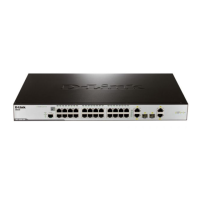
